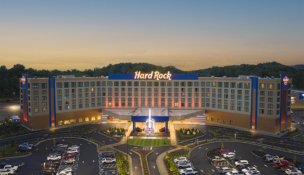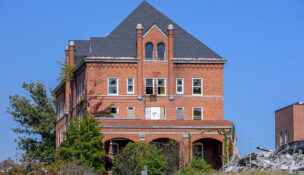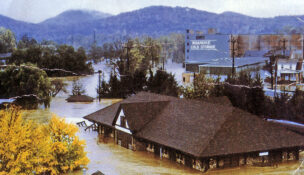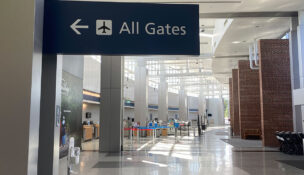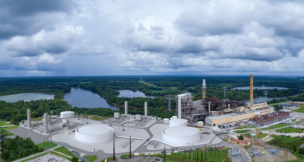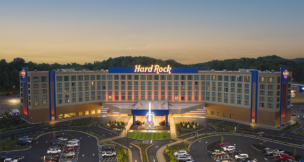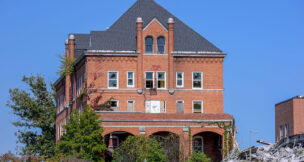
Ray Smoot stands in front of a circa 1906 railroad building that New River Valley leaders plan to renovate. Photo by Don Petersen

Ray Smoot stands in front of a circa 1906 railroad building that New River Valley leaders plan to renovate. Photo by Don Petersen
NRV passenger rail on track for 2027
Emily Dings //December 31, 2024//
Sooner than initially anticipated, rail passengers will be able to ride to and from the New River Valley for the first time since 1979.
In late August 2024, the Virginia Passenger Rail Authority approved a deal that would bring Amtrak service to the region via Norfolk Southern’s main line from Roanoke by 2027. Passengers would board and disembark at Cambria Yard in Christiansburg, says DJ Stadtler, executive director of the VPRA. There have been passenger rail depots in the Cambria area since 1856, and the station location being revitalized previously served passengers from 1906 to 1979.
The approved plan is projected to accelerate the timeline for passenger rail to Christiansburg by at least one year. Estimated to cost the state $444 million, the route is thought to be about $100 million less expensive than a previous proposal that would have used Norfolk Southern’s Virginian Line, according to the VPRA.
The new passenger segment will stretch for 33 rail miles from Roanoke’s Amtrak station to Cambria Yard, says VPRA Chief Operations Officer Michael McLaughlin. An additional 10 rail miles will extend to a maintenance station in Radford.
Stadtler expects construction to get underway in the first quarter of 2025.
“This is something that has been heavily desired for a long time,” he says, noting that there were once a dozen trains running to and from Christiansburg each day. Since passenger service ceased in 1979, those travelers have mostly depended on the congested Interstate 81.
“This agreement is proof of what’s possible when freight and passenger railroads work together,” says Norfolk Southern Senior Vice President and Chief Strategy Officer Mike McClellan in a statement.
Passenger rail to Christiansburg will be especially beneficial for area college students, says Ray Smoot, Salem District representative on the Commonwealth Transportation Board and co-chair of the New River Valley Passenger Rail Initiative, an advocacy organization backed by local governments and higher education. Many of the approximately 38,000 students at Virginia Tech and 8,000 at Radford University hail from cities along the Northeast corridor and likely will find rail transportation to and from school an attractive option.
Smoot appreciates that Virginia has been forward looking in its investments in passenger rail. “The truth is that within the country, we will never be able to build enough highways to eliminate congestion,” he says, “so we have to look at additional alternatives.”
t

